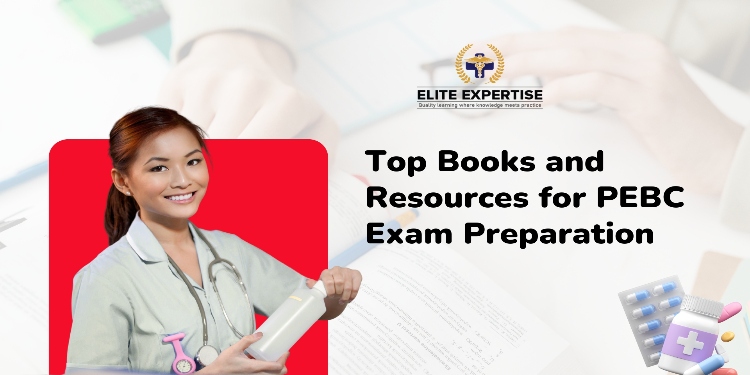Any examination requires focus, dedication, and commitment. More importantly, it requires an understanding of the examination format.
The journey towards Canadian pharmacy licensure, particularly the Pharmacy Examining Board of Canada (PEBC) exam, is challenging, and for many graduates, navigating the PEBC syllabus is a daunting task.
Fortunately, a growing ecosystem of resources, ranging from comprehensive textbooks to specialized PEBC preparation courses, is available to support candidates throughout every stage of their exam preparation.
In this blog, we will cover the right tools that can make all the difference. Here’s a curated guide to help you confidently tackle the PEBC exam and move one step closer to professional practice in Canada.
What is the PEBC Syllabus?
The PEBC syllabus is the official content outline that guides the Pharmacy Examining Board of Canada’s (PEBC) Evaluating Examination. The well-constructed document outlines the wide range of subject areas and topics covered in PEBC exams for pharmacist licensure across Canada. The exam syllabus is your primary source for understanding what knowledge and skills the licensing body expects from candidates.
The exam syllabus takes inspiration from Canadian university pharmacy programs, ensuring that the educational standards taught across the country are aligned.
The examining board frequently revises the exam syllabus to ensure consistency with pharmacy practice standards and the Canadian healthcare system. These revisions are necessary to ensure that the skills and knowledge of newly licensed pharmacists are safe and effective.
The exam syllabus has both theoretical and practical skills, becoming the main requirement of research results, cultural safety, and patient-centered care in Canada.
What is the PEBC Certification Process?
Step 1: Document Evaluation
Submit and pass an evaluation of your educational and professional credentials to become eligible for the next exam. A few candidates may be eligible to follow a simplified process; complete the eligibility survey to find out.
Step 2: Pharmacist Evaluating Examination
This test is designed to gauge pharmacy background knowledge. Passing it is a condition to proceed to the qualifying exams. Candidates in the streamlined pathway are exempt from this step.
Step 3: Pharmacist Qualifying Examination (Part I: MCQ & Part II: OSCE)
Fulfill both sections to prove your competence and get registered with PEBC.
Core Subject Areas in the PEBC Syllabus
The PEBC exam syllabus focuses on three primary domains, each containing specific subtopics and competencies that form the foundation of pharmacy practice.
- Pharmaceutical Sciences (25%)
- Pharmacy Practice (55%)
- Behavioural, Social, and Administrative Sciences (20%)
One of the significant changes in the plan is that Biomedical Sciences has been removed as a subject. It is a condition for admission.
The distribution of exam parts for the Pharmacy Practice and Behavioural, Social, and Administration (BSA) Pharmacy Sciences fields has changed, and the new distribution corresponds to the subjects that are more emphasized in the curriculum. Moreover, the initial plan has been changed in a way that it now covers even some new topics of the curriculum (e.g., health equity, social determinants of health, Indigenous health, cultural diversity/safety).
The revised exam syllabus will have a reduced number of items, totaling 140, down from 150 previously. The exam will consist of two sections, each section of 90 minutes to complete 70 questions.
Top Books for the PEBC Evaluating Exam
The PEBC Evaluating Exam is often the first major hurdle, designed to assess knowledge equivalent to that of a Canadian pharmacy graduate. Successful candidates have long favored these core texts for their thorough coverage of the PEBC exam syllabus:
Pharmaceutical Sciences
Katzung’s Basic and Clinical Pharmacology: The book discusses the use of drugs in patients and the monitoring of their effects, accompanied by case studies. It is packed with drug groups, prototypes, diagrams, and summary tables.
Pharmacy Practice
Remington: The Science and Practice of Pharmacy. Known as the “pharmacy bible,” Remington offers foundational knowledge across pharmaceutics, pharmacokinetics, pharmacy law, and ethics. While dense, it’s a must-have reference, especially if you need to shore up scientific principles.
Pharmacotherapy: A Pathophysiologic Approach by DiPiro. Ideal for clinical applications, DiPiro helps bridge basic pharmacological principles with therapeutic decision-making, which is particularly useful for the Qualifying Exams as well.
Behavioural, Social, and Administrative Sciences
Essentials of Pharmacoeconomics by Karen Rascati. It explains the terminology used in research and the application of economic-based evaluation methods for pharmaceutical products and services.
The PEBC official website also provides references to other textbooks. It is recommended not to rely only on those mentioned, so that you can cover all topics. This will help you strategically align your understanding to clear the PEBC exam.
Online Resources and Courses
Textbooks can only provide the foundation, but interactive learning and mentorship can give you the edge. That is precisely where structured PEBC preparation courses come into play.
Moreover, some other digital resources that can be helpful to you are:
- The official PEBC website is undoubtedly the best place to go for updated exam format, guidelines, and practice tools.
- Reddit forums and Facebook groups are community spaces that can be goldmines for advice, peer support, and book recommendations.
- YouTube channels – Many educators offer their lectures and review sessions free of charge, which also makes the challenging aspects of the subject easier to understand.
Tips for Smart Studying
Passing the PEBC exam can be achieved not only by working harder but also by working smarter. Below is the list of some parts of a time-tested few strategies which were found to be effective:
- Divide the PEBC syllabus into weekly targets. Gradually going through it helps protect against burnout and fosters long-term retention of the material.
- Use mock exams. Practice under timed conditions. Set a timer for yourself while taking full-length practice tests so that you become more accustomed to the pacing and pressure.
- Find a study group or a coaching group to be a part of. Not only does it help you to stay on track, but it also enables you to benefit from others’ strengths and insights.
- Work on your weak spots first. Don’t fall into the trap of over-reviewing the material you are familiar with—focus on the areas that are difficult for you.
- Utilize active recall and spaced repetition. Tools such as flashcards or practice quizzes make your memory in a much more efficient way than passive reading.
In addition, smart studying also means allocating some time to relax. Overexertion is a reality, and the brain is able
to better consolidate learning when one is rested and refreshed.
Conclusion
Studying for the PEBC exam can be a challenging but very satisfying experience. You will need a combination of reliable textbooks, up-to-date PEBC courses, and a good strategy for not only passing the exam but also growing in Canadian pharmacy practice.
You can also visit PEBC coaching in Canada for a flexible, supportive path tailored to diverse learning styles and needs. A great coaching course offers mock exams that stimulate the real environment and mentorship for support. Paired with your commitment and consistency, success is within reach.













































































